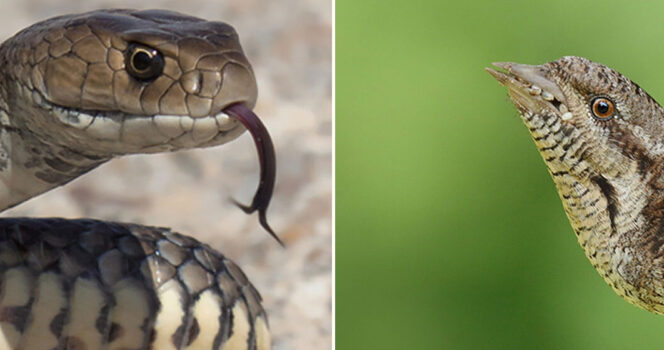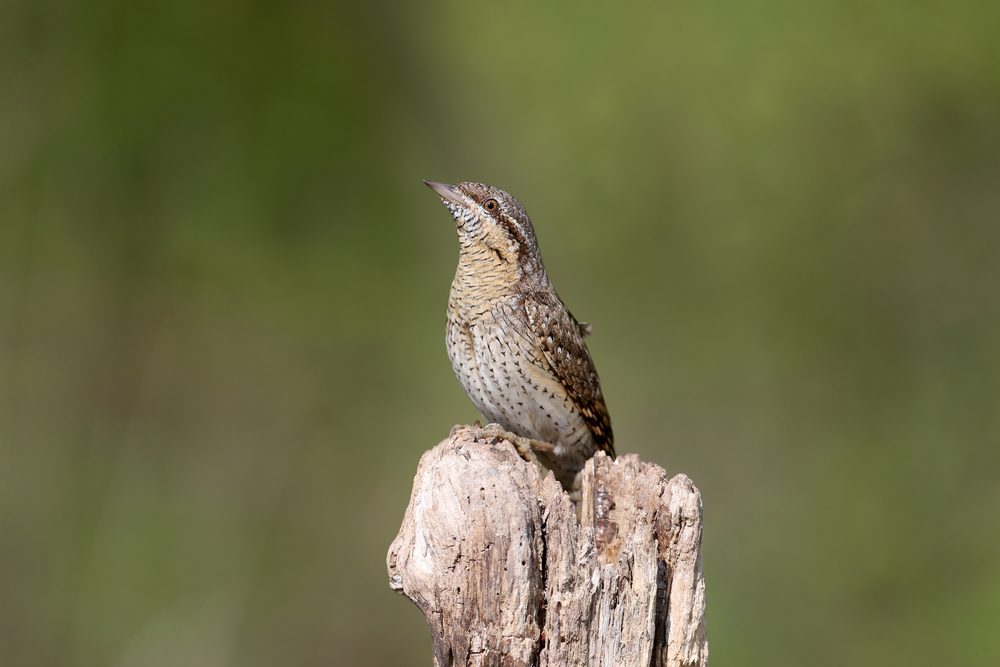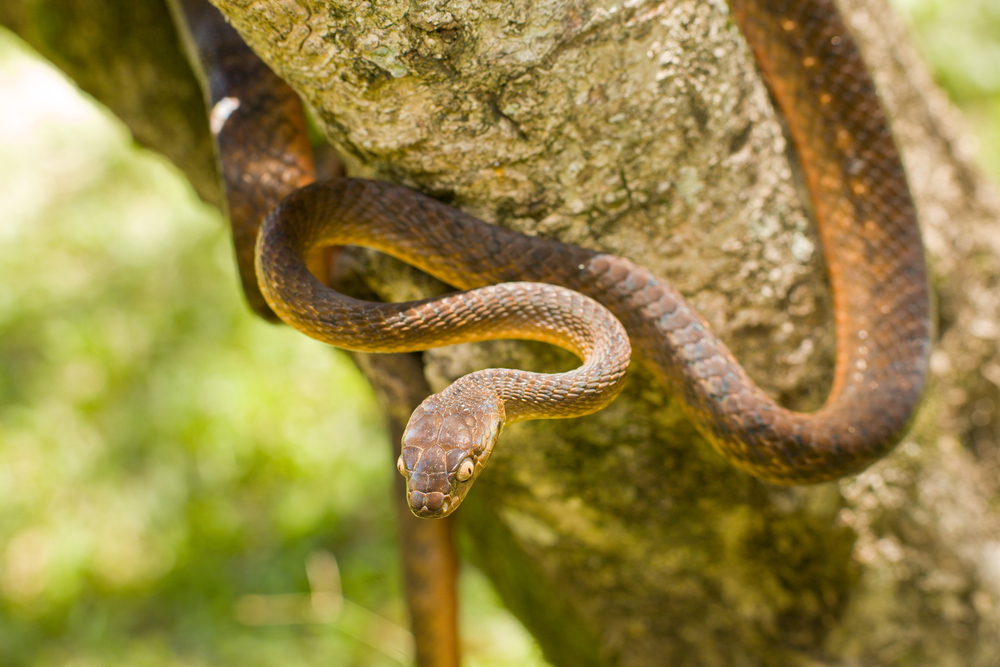

This tiny creature has intrigued many and gained attention on the internet. Once thought to have mystical abilities, this animal is a deceiver that mimics a dangerous snake, changing its call from shrill to hissing, resembling a bush snake.
Continue reading to discover more about this fascinating creature!
In folklore, the unassuming wryneck was a playful nymph who transformed into a bird after using magic to make Zeus enamored with a river nymph.
Another tale suggests that this bird, a member of the woodpecker family, utilized its magic to inspire love, being placed on a spinning top by young girls in pursuit of their desired partners.
Wrynecks may not cast spells, but their captivating head-twisting behavior is spellbinding.


Known for mimicking a ‘snake’ until the potential threat withdraws, the wryneck is a small brown woodpecker native to Europe, Africa, and Asia.
When in danger, they cleverly twist their heads and bob while emitting hissing sounds, effectively imitating a snake.
National Geographic states that impersonating a more imposing creature serves as a defense mechanism.
Although their deception may not be as convincing when held by a person, their disguise can easily deceive predators when seen in the shadows or while foraging on the ground.
Kenn Kaufman, a bird expert and field editor at Audubon magazine, explained the wryneck’s unique behavior, noting that their snake-like appearance and sounds are effective defense strategies.
Unlike their woodpecker relatives, wrynecks, the oddballs of the family, do not engage in drilling activities or create their own dwellings. They possess less pointed bills and use elongated tongues to extract insects from the ground while feeding.


While they may not resemble traditional woodpeckers in appearance or behavior, wrynecks share common traits such as a flexible, muscular neck.
These inherent woodpecker characteristics enable them to mimic snakes, as Kaufman explains.
“Even though they don’t excavate holes, they still retain woodpecker family features like intricate vertebrae,” he comments. “Without drumming on trees, they utilize these morphological attributes differently, behaving like snake birds and moving their heads in various ways.”
Kaufman elaborates that thousands of years of evolution shaped their unintentional snake-like attributes.
“Initially, there was no conscious effort to mimic another species. Natural selection likely favored wrynecks more closely resembling snakes, similar to other cases of mimicry,” he states.
Various creatures in nature engage in mimicry, like hawk moth caterpillars imitating snake heads or the mimic octopus emulating dangerous sea creatures such as snakes and venomous stonefish, as well as burrowing owls producing prolonged hissing sounds.


Elusive and well-camouflaged, wrynecks are challenging to spot, and while not endangered, their numbers are dwindling.
The wryneck’s scientific name, Jynx torquilla (from the Latin Torqueo, “to twist”), reflects its mischievous past and its ability to twist its neck.
If you enjoyed this article, you might also appreciate the story of mistaken ‘snakes’ seen in a tree, revealing a surprising reality upon closer examination.
Nature truly holds wonders! The wryneck is a captivating bird, and witnessing one mimic a snake would be truly intriguing!
What are your thoughts on this story? Share your comments below!
READ MORE: Mother took a photo of daughter, but upon closer inspection, she froze – this is the unwelcome guest they saw



